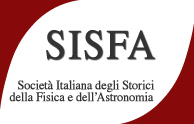Conveners
History of Physics and Astronomy (20th century)
- Ivana Gambaro (DAFIST - Università Genova)
History of Physics and Astronomy (20th century)
- Ivana Gambaro (DAFIST - Università Genova)
In recent years, two distinct accounts of collaborative knowledge have been proposed: the commitment model and the distributed cognition model. The commitment model emphasizes the importance of joint commitment among group members to shared beliefs in order that the group results can be regarded as collective achievements. In contrast, the distributed cognition model involves breaking down a...
In the previous congress we outlined the genesis of John Wheeler's "participatory universe" in the early 1970s and explained the meaning of the enigmatic expression "super-Copernican", which refers to the effect that, according to Wheeler, the community of observers across spacetime (not limited by "now-centeredness") is supposed to have on cosmogony itself. If we then focus on the late 1970s...
Scholars and policymakers consider techno-scientific cooperation as central in the process of European integration. However, few historical cases have explored this role in detail. In particular, the role of cooperation on fusion energy research remains largely unexplored, apart some preliminary studies suggesting that it had played a major role in some key moments of European integration. In...
Standardization has been recognized by historians as a major undertaking of international scientific organizations during the interwar period. Despite the undeniable relevance of this endeavor, the discussions driving these standardization activities have received limited attention. In my talk, I aim to explore these discussions by focusing on the International Union of Pure and Applied...
The scientific content of this Public Engagement Project is drawn from Anna Maragno's PhD Thesis, concerning the history of meteorology in Ferrara from the end of the eighteenth century to the first two decades of the twentieth and, in particular, focusing on the figure and on the work of Giuseppe Bongiovanni (1851-1918), director of the Meteorological Observatory in Ferrara.
The aim of the...
In this study we will analyse the status, meaning and implications, also at the educational level, of J.J. Thomson's and R. Millikan's respective research concerning the discovery of the electron and the measurement of its electric charge. In this regard, two experiments are usually addressed in secondary school and university textbooks as well as in many websites and Encyclopaedic entries:...
In 1926, Dirac had attempted to give a relativistic generalization of his mechanics of q-numbers, defining a new "quantum time" starting from the relation (P. A. M. Dirac, Relativistic quantum mechanics, Proc. Roy. Soc. of London A111 (1926) pp. 405-423.):
tW - Wt = -ih
In the 1927 article, Heisenberg will start from this relationship by Pauli and Dirac which implies this new concept of...
Una ricognizione sistematica del Fondo Pontecorvo al Churchill Archives Centre, del Fondo Wick alla Scuola Normale Superiore di Pisa e del Fondo Amaldi a Roma “La Sapienza” ha consentito un’ampia ricostruzione della corrispondenza tra Bruno Pontecorvo e alcuni altri membri del gruppo romano di fisica nucleare (Amaldi, Bernardini, Wick, Segré) negli anni 1945-1950.
Ne emergono significativi...
The discovery of the neutron in 1932, provided the key picklock that allowed quantum mechanics to be applied to the problem of nuclear structure. The first, moderately satisfactory attempt was undertaken by W. Heisenberg, who had already pioneered the introduction of exchange interactions in the quantum mechanics of identical atoms and had first applied them to the helium atom. While...
In this study, we revisit Bruno Rossi's pioneering experiment on cosmic ray showers, a milestone in understanding high-energy astrophysical phenomena. Rossi's original technique, developed around 1930, utilized Geiger-Müller (GM) tubes arranged in a coincidence setup, provided with an original coincidence circuit. Among other configurations, Rossi wanted to detect showers produced by primary...
This contribution offers an unprecedented retrospective on the editorial story of “Alchimia del tempo nostro”, a book co-written by Ginestra Amaldi and Laura Fermi. It is a story holding a special historical-scientific interest and human value, which unfolds against the backdrop of the 1930s and the Second World War. The events are reconstructed through the documents emerged from the archive...

